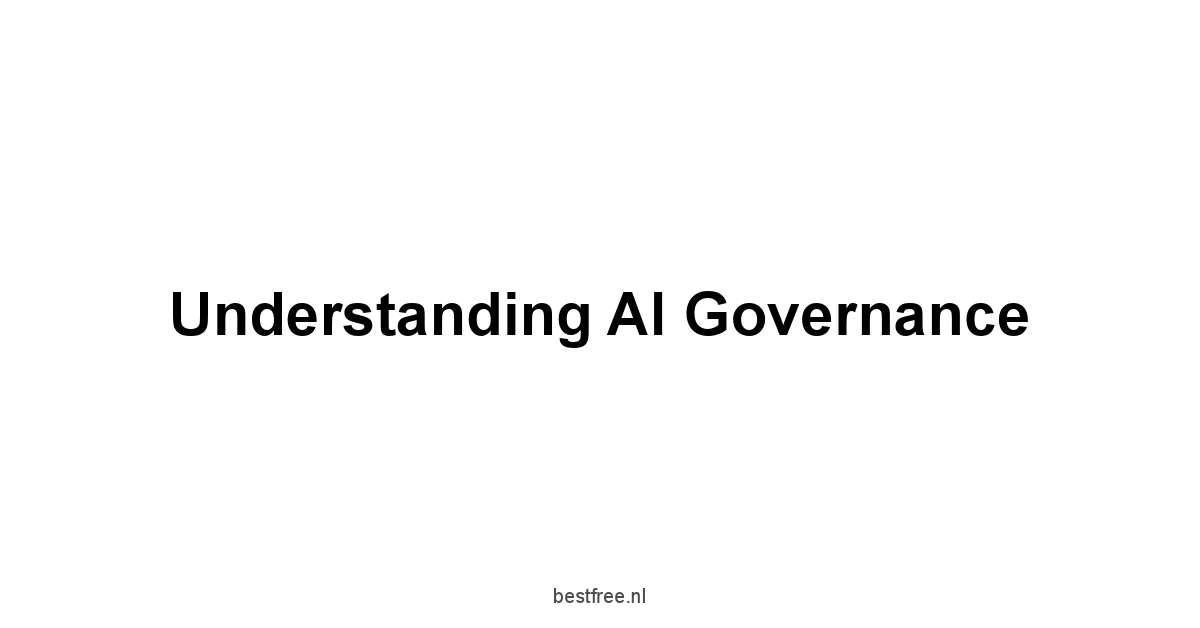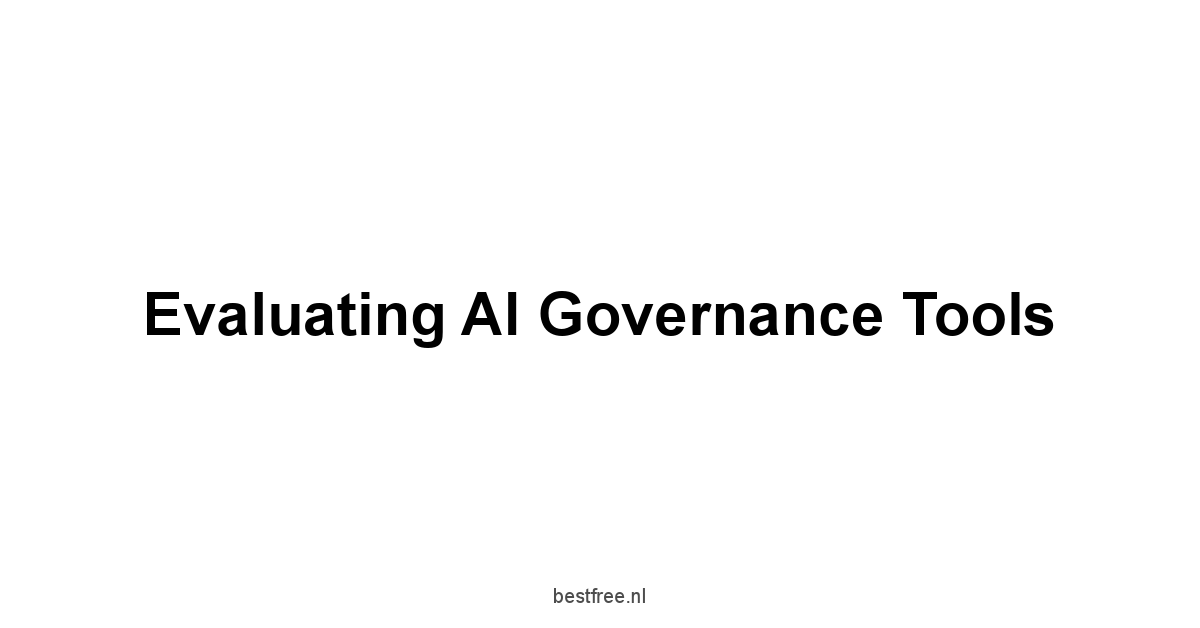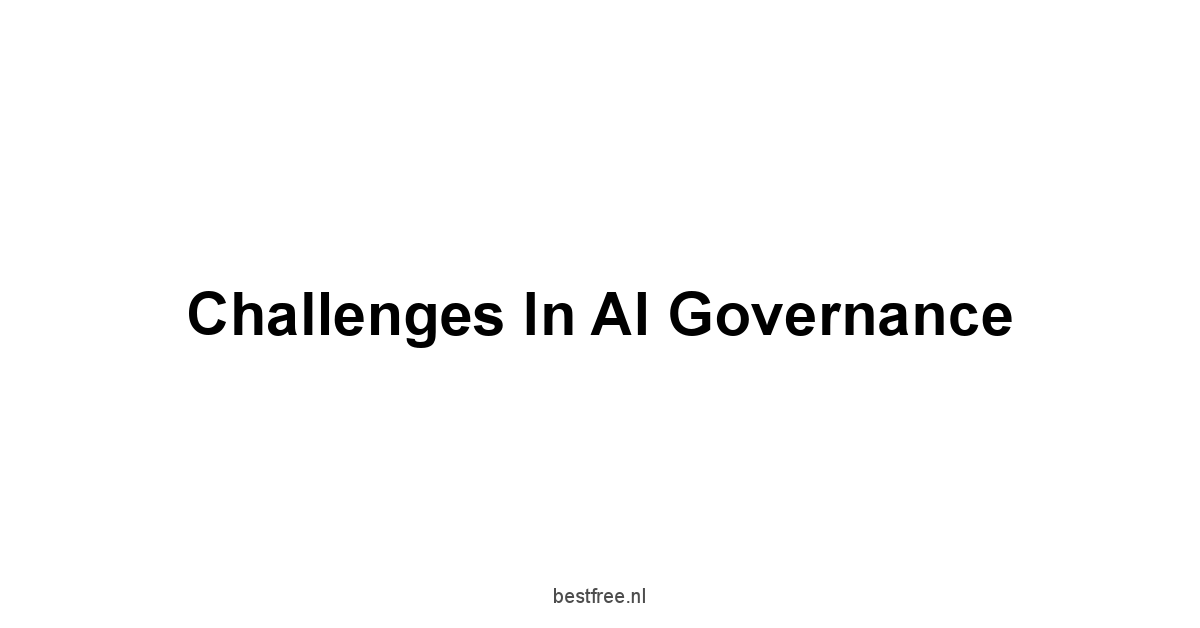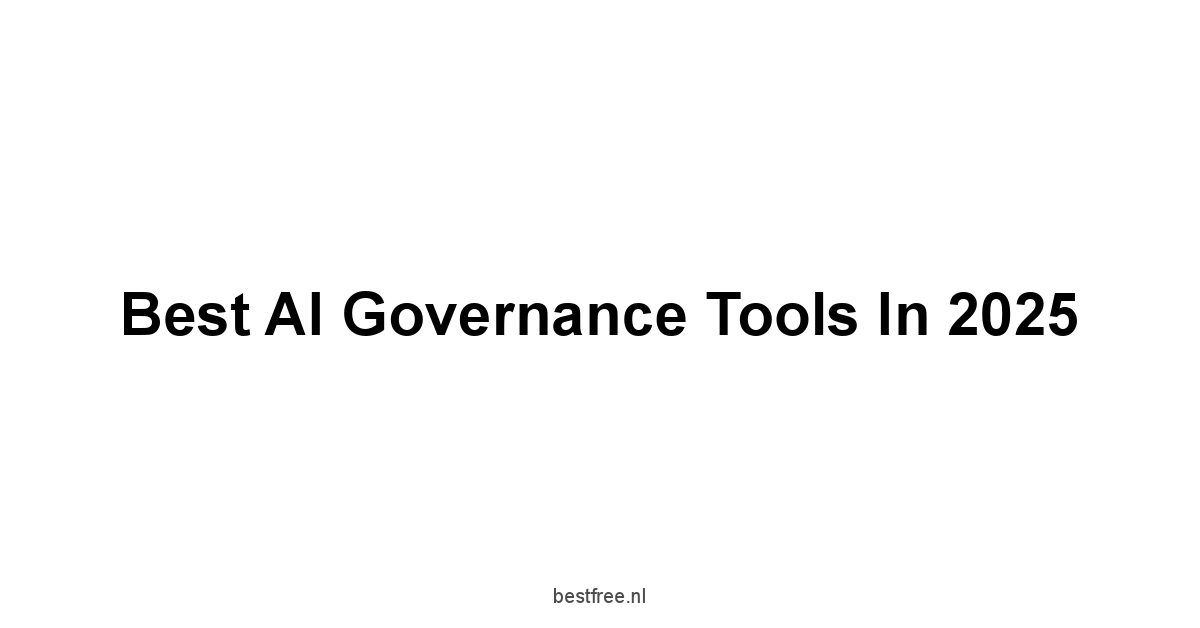To navigate these complexities, organizations should focus on these key points:
-
Key Features of Effective Tools:
- Compliance Tracking
- Risk Assessment Modules
- Audit Trails
- User Feedback Mechanisms
-
Prominent Tools to Consider:
- AI Governance Platform AIGP
- Algorithmic Impact Assessment AIA
- Explainability Tools e.g., LIME, Shapash
The need for clear and accountable AI increases. Integrating these tools protects organizations. It also boosts their innovation while upholding ethics.
Stay ahead. Embrace AI governance in 2025.
Also read: my favourite locations to work from
Understanding AI Governance

AI governance is the rules and structures that shape how AI is made, used, and checked.
This governance matters. It builds trust and accountability in AI systems. It makes sure they work for society, ethically and fairly.
As AI technology races forward, the need for strong governance rises. AI holds power in many areas now.
The stakes are high. Governance affects the legal, ethical, and operational sides of technology use.
Organizations that adopt AI governance shield themselves from risks. Regulatory fines, damage to reputation, and failures can follow without it.
Good governance ensures obeying the rules while sparking innovation. This leads to AI that is responsible and sustainable.
Definition and Importance of AI Governance
AI governance is the way we design, deploy, and monitor AI systems.
It includes compliance with laws and ethical standards for responsible AI.
The aim is simple. Reduce risks like bias and privacy invasions while enhancing AI benefits.
Public scrutiny grows. Regulations rise. The significance of AI governance is clear.
A study revealed that nearly 75% of people worry about AI biases in decision-making. Hiring and lending are critical areas here.
This shows a strong demand for accountability and solid governance in AI applications.
Key Components of AI Governance Framework
A strong AI governance framework includes several key parts:
- Policies and Guidelines: Create clear policies on ethics, compliance, and operations.
- Roles and Responsibilities: Define roles for everyone involved—developers, legal teams, ethicists, leaders. Accountability must flow through all stages.
- Risk Assessment: Make sure processes exist to find and address risks in AI use—bias, privacy, and security.
- Transparency Measures: Document decisions, methods for training AI, and reasons behind outcomes.
- Monitoring and Auditing: Set up ongoing checks to ensure adherence to standards and adapt to new tech and rules.
A solid AI governance framework is vital for organizations that wish to use AI ethically and harness its benefits.
Globally, governments focus more on creating strong rules to manage AI technology deployment.
The European Union’s Artificial Intelligence Act is one example. It sets a legal framework based on risk levels in AI systems.
AI applications fall into four risk categories, from minimal to unacceptable, each demanding different regulations.
By early 2025, research shows over 70% of countries will have laws or drafts governing AI use, tackling data protection, accountability, and ethical concerns.
Sectors like finance and healthcare, where AI plays a major role, can expect even more stringent regulations to protect public interest.
Also read: 7 beste gratis videoconverters
Emerging Trends in AI Governance

AI governance is changing. New trends shape how organizations deal with AI.
Understanding these trends is crucial. They inform governance frameworks that meet societal needs and regulatory demands.
Influence of Global Standards and Regulations
Global standards and regulations shape AI governance.
Organizations must comply. They face local laws and international standards that allow data sharing and interoperability of AI systems.
- Harmonization of Standards: The growth of organizations like the International Organization for Standardization ISO and the Institute of Electrical and Electronics Engineers IEEE shows a move toward global standards for AI. ISO reports that over 50 countries have started to adopt these standards in their governance frameworks.
- Intergovernmental Collaboration: Collaborations, like the OECD’s AI principles, foster shared governance practices. They enhance accountability and establish best practices for responsible AI use. These efforts are vital for addressing global issues, such as algorithmic bias and ethical AI.
The Role of Transparency and Explainability
Transparency and explainability dominate AI governance talks.
As worries about AI bias and decision-making grow, stakeholders seek insights into AI systems.
- Explainable AI XAI: More organizations invest in explainable AI. Studies reveal that 90% of AI practitioners feel the ability to explain decisions is vital for user trust. They adopt methods to make algorithms interpretable, easing fears around black-box systems.
- User Engagement and Communication: Organizations focus on informing users. They explain how AI systems work, the data they use, and the rationale behind decisions. This transparency builds trust and calms public fears about AI deployment.
Increasing Focus on Ethical AI Practices
The push for ethical AI intensifies. It shapes governance frameworks everywhere.
- Ethics Committees and Guidelines: Companies form ethics committees of diverse members. They ensure responsible AI development. A Deloitte report states that nearly 50% of organizations will have ethical guidelines for AI by 2025.
- Embedding Ethics into Product Design: Organizations weave ethics into their design processes. They emphasize inclusive practices that cater to diverse users. This shift reduces algorithmic bias and promotes fairness.
As these trends evolve, organizations must weave them into their AI governance frameworks. They should align with societal values and expectations.
Also read: 5 beste gratis tekenprogrammas
Best AI Governance Tools of 2025
The need for AI governance grows. Many tools now lead the way. They are essential for firms wanting to govern AI well.
Overview of Leading Tools in AI Governance
-
AI Governance Platform AIGP: AIGP is a tool. It helps organizations track compliance, assess risks, and document governance. Custom dashboards show AI model performance and ethical alignment.
-
Algorithmic Impact Assessment AIA: AIA tools measure AI systems’ potential impacts on users and society. They help firms find unintended effects and create plans to handle them before use.
-
Explainability and Bias Detection Tools: Tools like LIME and Shapash bring transparency. They help users grasp how algorithms reach decisions and find any biases in training data.
Features Essential for Effective Governance
Good AI governance tools need key features:
- Compliance Tracking: Tracking compliance with laws is necessary. It prevents legal problems.
- Risk Assessment Modules: Tools must assess risks thoroughly. They should pinpoint weaknesses and offer ways to mitigate them.
- Audit Trails: Keeping detailed records of decisions and performance ensures accountability.
- User Feedback Mechanisms: Allowing users to report issues builds cooperation and shared oversight of AI systems.
Integration with Existing Systems and Processes
AI governance tools need to fit into systems and processes seamlessly.
- Data Compatibility: They should allow easy data import and export from other systems. This keeps governance smooth.
- APIs and Interoperability: Governance tools must have APIs for integration with various platforms. This supports a comprehensive approach to AI governance across departments.
- User-friendly Interfaces: Simple interfaces help stakeholders adopt tools quickly. This encourages involvement and swift management of AI applications.
Also read: 5 best free seo tools
Evaluating AI Governance Tools

As organizations think about investing in AI governance tools, they must evaluate them carefully. They need to ensure these tools meet their specific needs.
Criteria for Selection of Governance Tools
In choosing governance tools, organizations should look at:
- Customization: Tailoring features to fit the organization helps in aligning with current processes.
- Support and Training: Good support services and training resources are essential for smooth implementation and continued use of governance tools.
Performance Metrics for Governance Tools
Organizations must set clear performance metrics for governance tools. They might include:
- Compliance Rates: Monitoring compliance with regulations measures the governance framework’s effectiveness.
- Risk Reduction: Tracking improvements in risk assessments and mitigation strategies shows the impact of governance tools.
- User Satisfaction: Collecting feedback from users helps identify issues and areas for improvement.
User Feedback and Community Insights
User feedback and insights from community forums can shape tool selection.
Organizations should favor tools with:
- Positive Reviews: Tools with high ratings and good stories tend to yield better results.
- Community Engagement: Platforms that encourage active user communities can offer support, share best practices, and foster problem-solving.
- Regular Updates: Developer responsiveness to user feedback can enhance the tools’ longevity and effectiveness.
Also read: 7 best free website hosting services
Challenges in AI Governance

AI governance offers opportunities, but organizations face challenges that obstruct effective implementation.
Common Pitfalls in Implementing Governance Tools
- Resistance to Change: The culture of an organization can be a stone wall. Employees often resist adopting new tools that disrupt their routines.
- Lack of Resources: Limited budget and personnel hamper the setup of governance frameworks, leading to failure in operations.
- Over-complexity: If governance frameworks are too intricate, they confuse users and weaken AI governance.
Data Privacy and Security Concerns
Data privacy and security are major issues in AI governance. Organizations must find the balance between innovation and compliance.
- Compliance with Regulations: Following regulations like the General Data Protection Regulation GDPR can be a tangled web for organizations that straddle jurisdictions.
- Data Breaches: The threat of unauthorized access demands strong security for data storage and processing.
Balancing Innovation with Compliance
Organizations struggle to drive innovation while adhering to governance frameworks.
- Proactive Risk Management: Organizations must assess risks early and adjust governance practices to foster responsible AI innovation.
Also read: best machine learning software in 2025
Future of AI Governance

Predictions for AI Governance Developments
- Stricter Regulations: Regulators will tighten the reins. More rules will govern AI, especially in essential sectors like finance and healthcare.
- Integration of AI in Governance Practices: Organizations will use AI tools more. This will make governance more efficient and effective in monitoring what matters.
The Role of AI in Shaping Governance Strategies
AI will be vital in governance. It will automate tasks, find risks, and suggest solutions.
Adopting AI analytics and monitoring will increase organizations’ ability to adjust to governance challenges as they arise.
Importance of Collaboration among Stakeholders
The future of AI governance requires collaboration. Policymakers, industry leaders, and civil society must work together.
- Cross-Sector Collaboration: Engaging diverse stakeholders will create a balanced approach. Different views and experiences will enrich governance discussions.
- Public Engagement: Involving the public in AI governance talks breeds transparency. It helps organizations understand societal hopes and fears about AI.
Also read: best adobe consulting services in 2025
Case Studies in AI Governance

The study of real-world cases shows the need for strong AI governance. It matters for organizations.
Successful Implementations of Governance Tools
- Case Study: Google DeepMind: Google DeepMind built a strict AI governance framework. They set ethical guidelines for their research. This approach ensured they met regulations and earned public trust. Their systems aimed to minimize bias in algorithm development.
- Case Study: IBM Watson: IBM Watson used thorough governance strategies. They focused on user feedback to improve transparency and decision-making. By regularly collecting insights, they made improvements that enhanced their AI systems.
Lessons Learned from Governance Failures
- Case Study: Amazon Rekognition: Amazon faced criticism for its facial recognition technology. This raised issues of privacy and bias. The backlash forced Amazon to rethink its AI governance and consider ethics in future work.
- Case Study: Facebook’s Cambridge Analytica Scandal: This event exposed serious flaws in data privacy governance. It pushed Facebook to establish stricter protocols and sparked conversations about user data protection throughout the industry.
Impact of Governance on AI Project Outcomes
Organizations that prioritize solid AI governance see better project results:
- Reduced Risks: Effective governance cuts down incidents of bias and ethical issues. This lowers the risks tied to AI deployment.
- Increased Trust: Strong governance practices build public trust. They boost user confidence in AI technologies and their use.
Also read: best payment gateways
Conclusion and Next Steps in AI Governance

AI governance is vital now. Organizations must act. They must build frameworks that ensure ethical, transparent, and accountable deployment of AI.
Continuing Education and Resources
- Professional Development: Invest in the education of stakeholders. Promote awareness of trends and changes in AI governance.
- Access to Resources: Give teams the tools they need. Relevant resources, research, and case studies help in making informed decisions.
How to Stay Updated on Governance Trends
- Industry Conferences: Attend AI governance conferences. Stay informed through discussions and network with others.
- Online Communities and Forums: Participate in online platforms about AI governance. Gain insights and share best practices.
Building a Culture of Responsibility in AI Development
To foster responsibility in AI development, one must:
- Inclusion of Ethical Principles: Make ethical principles part of the culture. Drive commitment to governance among stakeholders.
- Encouraging Open Dialogue: Support open conversations about AI’s implications. Ensure accountability and a shared commitment to ethics.
Organizations must put AI governance first. They must leverage AI’s capabilities while promoting responsible, ethical practices in all their actions.
Also read: best free creative management platforms
Conclusion
It is clear now. We need strong AI governance.
As AI grows and spreads, organizations must focus on ethics and accountability. These systems should help society.
Governance is more than compliance. It builds trust and transparency. This is necessary for public acceptance. Studies show 75% of people worry about AI biases in decisions.
Creating solid governance is not just for organizations. It is a requirement for society.
Over 70% of countries will likely pass AI laws by 2025. Organizations must be nimble and flexible.
Joining forces with other governments and following international guidelines will help. A unified approach is key for dealing with global AI use.
We must embrace trends in transparency and ethical AI. These must be part of our organizational culture.
People want to understand AI systems. Ninety percent of practitioners believe that being able to explain AI decisions builds user trust.
Organizations need to invest in transparency. They must establish clear communication and documentation.
Ethics committees and inclusive design are crucial. They help reduce biases and build a responsible culture.
In brief, the path to effective AI governance requires constant education, collaboration, and ethics.
Organizations must use advanced tools while also fostering a culture of accountability and transparency.
By doing this, they can handle the challenges of AI technology. They will build public trust and ensure these systems work for humanity’s benefit in the future.
Also read: best free data science and machine learning platforms in 2025 2





Leave a Reply